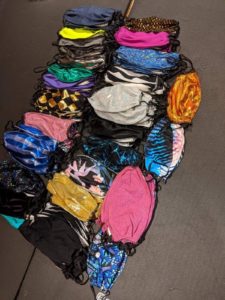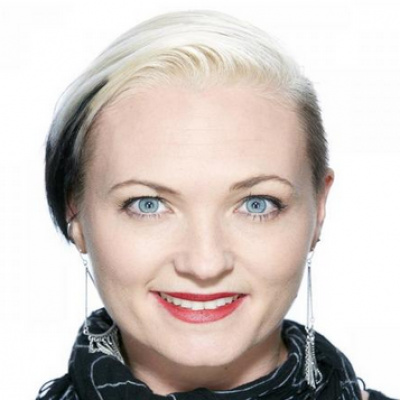5 Ways Circus Artists Are Joining the Fight Against the Global Climate Crisis
In these difficult times, many circus artists and companies are feeling helpless as they face the COVID-19 global pandemic and the ensuing panic that has gripped the world. Performance jobs have evaporated, studios have been shuttered, and tours ended early or before they had even begun.
When we are feeling hopeless, lost, and adrift on a sea of uncertainty, it is often comforting to know that we have the ability to make positive change, influence others, and help our local and global communities. We have all witnessed an outpouring of community over the past weeks in response to coronavirus as folks share their knowledge and skill online with the world, often free of charge. We have also witnessed a global decline in air pollutants and a return of wildlife to urban areas as travel bans have kept planes out of the skies and many vehicles off the roads, and the human population has sequestered itself indoors. As we emerge from this pandemic, let’s take this flood of goodwill and global citizenship and continue paying it forward for the betterment of the planet and its people as a whole. Compiled below is a list of concrete steps that several circus artists and studios are already taking to reduce their environmental footprint and increase knowledge and understanding of the climate crisis.
1. Educate and Connect with Others
“I found when I tried to find circus work that tried to engage in environmentalism or climate change I kind of just had to fall down the right internet rabbit holes,” says Eliana Dunlap, a multi-disciplinary performance and visual artist currently based in Boston, MA. “I thought it would be so cool if there was like one place where we could connect all the people that are doing this and they can talk to each other and share information and share ideas and if someone is interested in this they can find us and a community and a wealth of information and resources.” And, so the Circus Action Network was born. Working alongside co-collaborators Sonya Gurwitt and Maxine Gigliotti, Dunlap says she is still trying to figure out how best to engage the community. One initiative they hope to launch in the near future is video conferencing as both a way to have open discussions and also to lead more topic-specific projects or panels where participants from around the world could access and ask questions of experts in the field. She also hosts a podcast, Changing the World and Other Circus Related Things that continue to share ideas and engage with a diverse group of artists from around the world.
One of the most challenging aspects of any type of communication is finding the right language and tone in order to communicate effectively with your audience. “There is so much charged and loaded language around activism, social justice, climate change, that finding the right language that feels non-combative to people is interesting and challenging, “ she says. Dunlap doesn’t shy away from creating activist art herself but also doesn’t feel as though it needs to be heavy-handed. Her expertise in this area has been tapped by organizations such as The New England Center for Circus Arts (NECCA), which has twice invited Dunlap and her collaborators to speak at its Brown Bag lunch discussion workshops. “You can make fun, silly work that is meant to be fun and to be enjoyed and is still saying something,” she says. “This summer I was working on a street show project with a friend and it was all about sustainability and climate change, but our goal was to not be necessarily too overt, but really fundamentally putting it into the foundation of the work. We had a plant on stage with us, so our relationship to the plant, how we sourced our materials… and it just felt really good to create that way,” she says.
2. The Peril of Apparel: Buy Local and Sustainable Brands
While fast fashion makes shopping for training clothes and costuming less expensive, it is well known to be a major contributor to climate change by producing around 10% of the world’s carbon emissions, clogging landfills, using copious amounts of water, and polluting oceans with microplastics.
Jennifer Moore of Fit2Fly Apparel in Toronto, Canada, began making environmentally-conscious training and performance attire in 2018. With a small team, Moore makes all attire in house, focusing on using fabrics in the most conscientious way possible. Any scraps are kept and repurposed. These leftover scraps have led to the expansion of the company’s offerings to include items like pole shorts, sports bras, underwear, headbands, and wrist protectors. Most recently, Moore sent dozens of face masks made of scrap material to local hospitals in response to the COVID-19 pandemic.
Upcycling used textiles is another way to keep them out of the landfills and to create unique statements with clothing. Sara Torrie is a Toronto-based textile artist that works with local circus performers. In 2019, Torrie was tasked with creating the wardrobe for Circus Sessions, a yearly residency held by Femmes du Feu Creations. Facilitator, Michelle Man, requested costumes be made of parachute material, a very unconventional fabric choice. Torrie rose to the occasion creating 12 costumes in four days out of repurposed used parachutes.
Working with contortionist Samantha Halas and stilt-walker Allara Gooliaff posed challenges, but through communication with the artists, ingenuity, and a creative approach, she was able to fabricate highly functional and unique costumes and build relationships within the performance community. Of her approach, Torrie says, “I think we’re all going to have to change and learn to do more with less.”
3. Create Work About the Environment or In the Environment
Animacy Theatre Collective is a Canadian theatrical company known for producing works that weave artistic, social and environmental ideas together. Coming from a documentary film background, Alexandra Simpson, co-artistic director of Animacy Theatre Collective, turned to theatrical productions early on in her career. The incorporation of physical theatre, mask, and clown came out of a desire to avoid presenting works that came off as didactic, preachy, or boring.
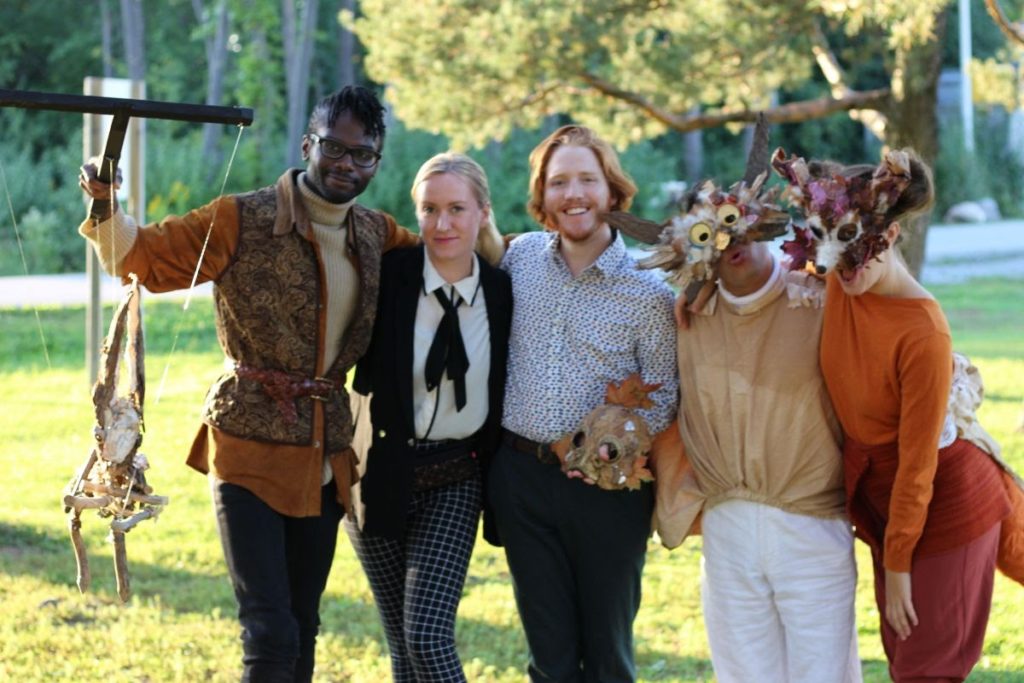
Animacy Theatre Collective approaches their environmental work from a variety of avenues. Working in the environment is an important part of their storytelling. In a production such asThere is No Word for Wilderness, playwright Lisa Hamalainen created a story and nature walk that examines one woman’s journey through the wilderness. Not only is the story about the environment, but it also takes place outdoors in local parks. When staging a production outdoors in a non-traditional theatre setting there are many factors to consider, so flexibility and responsiveness are keys to success. Parks are busy places, full of diverse populations that very well might not have come there to see a performance. There is the weather to consider and ambient noise that cannot be predicted. “All of the performers spent time getting to know their character, focusing on character development and creation,” says Simpson. “It was an interesting task for performers who might be more used to a structured rehearsal.”
Working with indigenous leaders in the community is another way to honour the land and environment in your productions. InThere is No Word for Wildernessthe company teamed with Shelba Deer, who led an Anishinaabe ceremony and teaching after the performance. During their most recent production,Pest Me Pet Me, Animacy Theatre Collective also implemented a voluntary “land tax” on patrons attending the show. Monies collected were then donated to a local indigenous organization.
4. Use Your Skills to Hold a Fundraiser
The world watched in horror as bushfires ripped through the Australian landscape, destroying homes, decimating millions of acres of bush, and killing countless animals. When a call for help was made, artists responded including Toronto, Canada’s Jamie Holmes. The local circus coach and owner of Circus Fix mobilized the local community and within a matter of days, held a fundraiser that included a sponsored team climb-a-thon, silent auction, and showcase performance featuring artists from across the province of Ontario. Her efforts, along with the efforts of volunteers, participants, and performers, raised over $4000.00, which she donated to WIRES, an Australian wildlife rescue charity.
Holmes has the following suggestions for artists or companies interested in hosting their own fundraiser. “When I was planning for Climbing for Koalas, I made lists!” she says. First she sat down and wrote out sheets and sheets of ideas and then, with the help of trusted peers, she started to pare the ideas down to a more manageable number. Then she made daily to-do lists so things didn’t become overwhelming. Social media was an easy, cheap, and accessible way to advertise the event and soon three additional studios in other cities joined and held their own climb-a-thons in conjunction with the one being held at Circus Fix. “It was a lot of hours of just me working on it, but it was worth it and now we plan on choosing a charity and holding an event every year,” Holmes says.
5. Use your Talents for Activist and Street Art
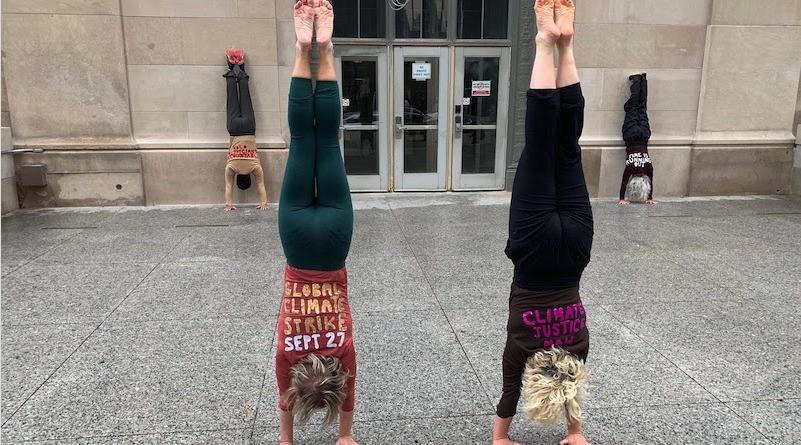
Clowns for Climate Justice, Acting for Climate, Handstands for Humanity. Each of these groups have taken to the streets to spread awareness about the climate crisis and you can too!
When faced with the mounting evidence of an impending climate catastrophe, Emily Hughes, co-artistic director of Hercinia Arts Collective in Toronto, Canada, felt as though she had to do something. “I was wondering, ‘What’s the point of all of this training and development if there is no future?’” she says. She often does handstands in public places for photo ops and she found that her actions drew the attention of people around her, prompting them to stop, take pictures, and engage in conversation. With this in mind, she reached out to the local circus community and started planning her first pop-up event, Handstands for Humanity. She and a group of folks would head to Union Station, Toronto’s largest commuter hub, during morning rush hour and perform handstands while wearing shirts with climate justice messages. People would stop and take photos, share them on Instagram, and a local news station covered one of their pop-ups. “We wanted to make our activism part of the commuter’s daily routine, so we always went back to the same place. People were generally positive and enthusiastic,” says Hughes.
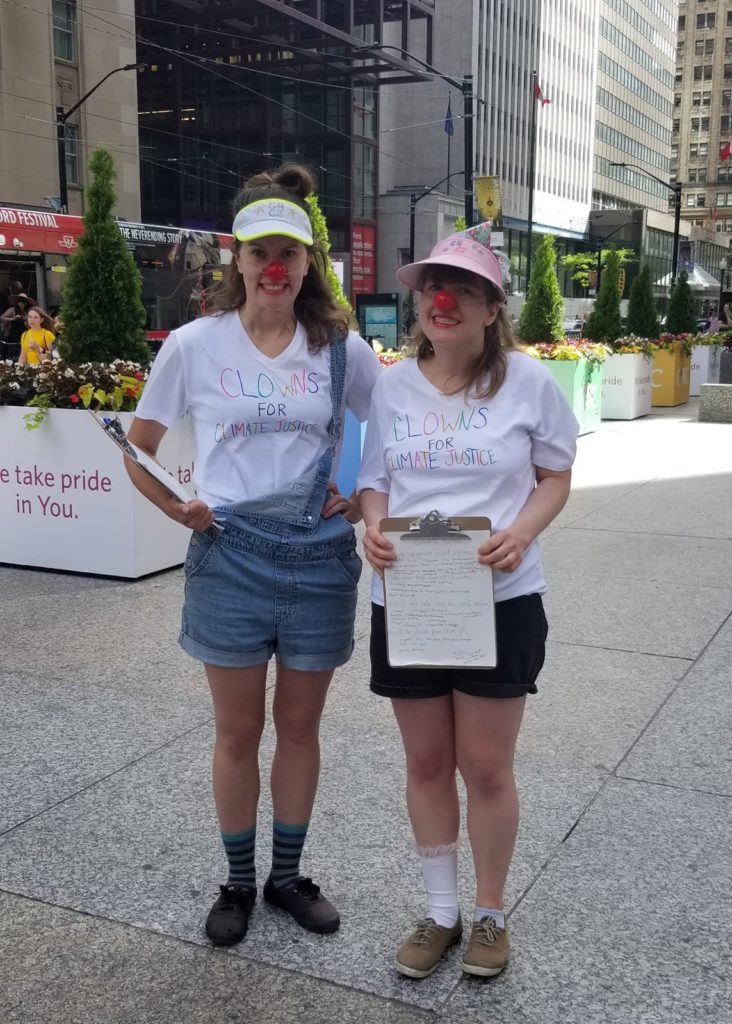
Clowns for Climate Justice also has a wish to engage with the business community in regards to the climate crisis and their approach has been through comedy. Acting as part of the Extinction Rebellion Circus, the clowns hit Bay Street, which is like the Wall Street of Canada, to talk to business people. “We wanted to use the clowns to engage with people in a non-confrontation, non-preachy way,” says Alexandra Simpson. One of her favourite questions, “Do you think the government should ban Olive [all of] Oil?” always got a laugh from people when they were stopped to talk.
...Do you have a story to share? Submit your news story, article or press release.


